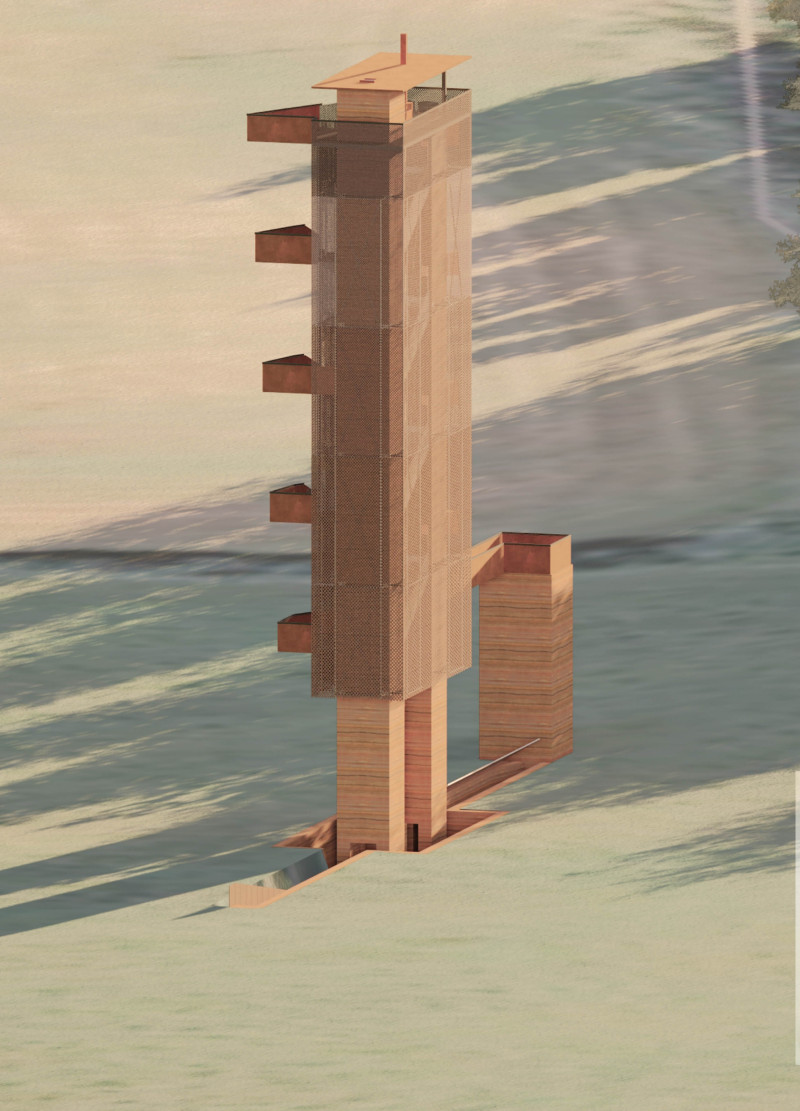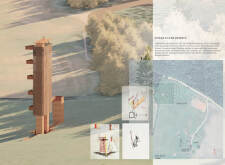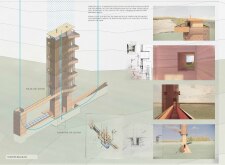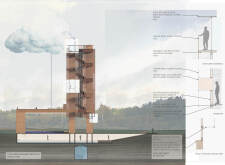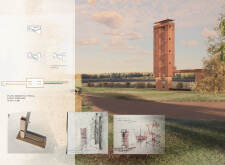5 key facts about this project
Earth Supper is located in the North Latvian Biosphere Reserve. The project aims to create a connection between the natural surroundings and the architectural form. Featuring three pillars that rise from a cut in the earth, the design symbolizes a transition from the landscape to the structure itself. Visitors experience a journey into the tower's sub-level, moving from earthy elements to a more industrial, metallic environment. As they ascend, the setting and structure invite a sense of awareness of the beautiful natural context.
Architectural Expression
The design incorporates landings and punched openings that provide clear views of the horizon and the expansive biosphere. These carefully placed apertures allow those inside to connect with the landscape outside. This approach fosters an immersive experience, highlighting how design can encourage interaction with nature while framing and enhancing the enjoyment of the surroundings.
Sustainable Features
Sustainability plays a key role in Earth Supper. The tower serves as a rainwater collection unit for the Kurgi Farm, offering easy access to stored rainwater for agricultural use. The overflow from the rainwater storage becomes a reflective pool, which sits under a grate floor, creating an attractive visual and contributing to the project's sustainable focus. This dual function merges practicality with an inviting atmosphere.
Material Palette
Material choices in this project are intentional and focused. The design features an insulated metal panel roof, which includes a channel gutter system. A copper panel screen adds a visual link to nature, while a polished concrete floor slab provides stability. An unconditioned concrete panel system visually connects with rammed earth walls. The structural support is formed by steel tube framing, spaced at regular intervals, paired with a steel grate floor that integrates into the overall design.
At the top of the tower, the form becomes denser, resembling a tree. This not only reaches toward the sky but also reinforces the relationship between architecture and nature. The design invites quiet reflection and connection to the environment, encouraging occupants to engage with both the structure and its landscape.


